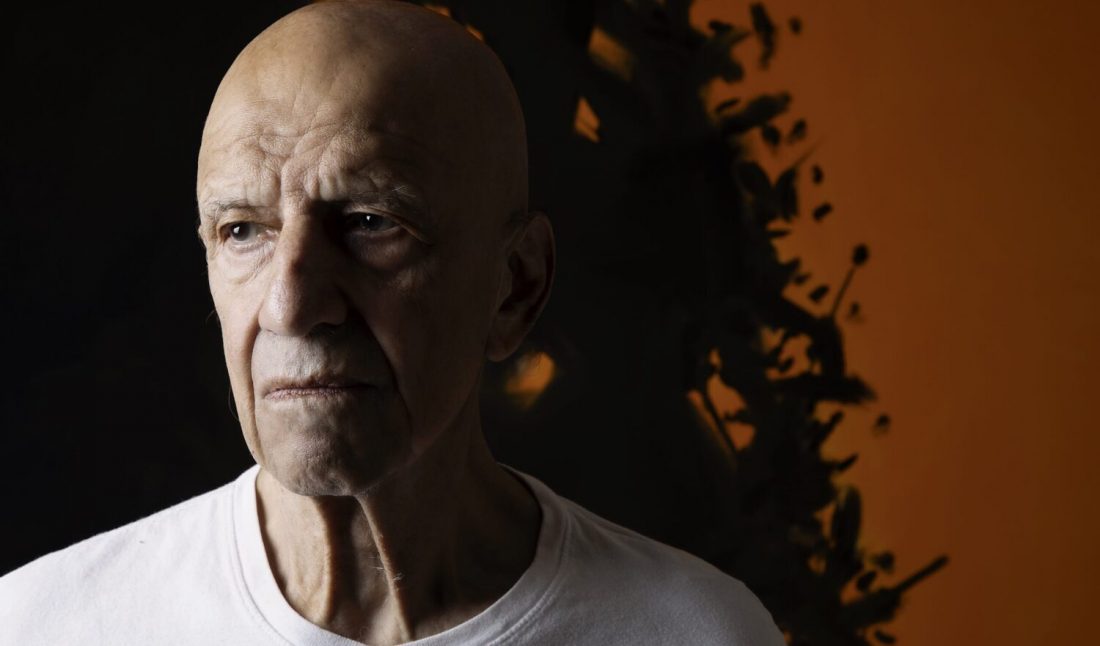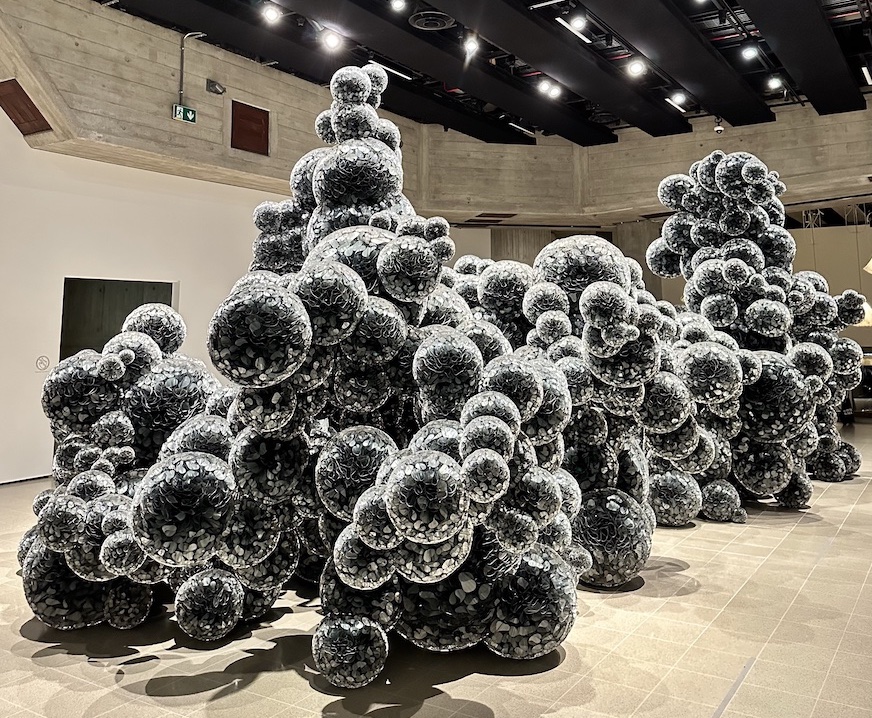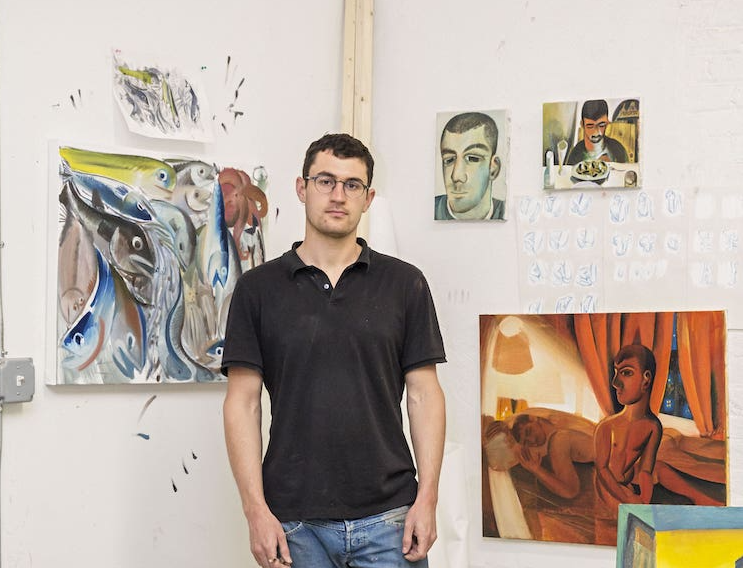The Renowned Artist Expands on the Portrait Series
Early this month, Thaddaeus Ropac Paris Marais unveiled a spirited show of new paintings by artist Alex Katz titled “Purple Splits,” currently on view through July 29. After a sweeping career retrospective at New York’s iconic Guggenheim Museum, the visionary’s latest works focus on his unfolding series of singular portraits, which appear as cinematic collages of the nuanced human visage. Deeply inspired by Cubism, and the way in which the wide angle lens was used in his favorite films, Katz deftly developed his own creative process early in his career, spotlighting the splendid facets of human expression, and recreating a hypnotic moving image by way of fragmented repetition.
Since his debut in New York in the 1950s, with a powerful alternative to the Abstract Expressionism of the time, the Brooklyn-born artist became known for his vibrant drawings, paintings, sculptures, and prints which were colorful and dynamic representations of his inner circle, as well as notable advertising, movies, and music of the time. Across his current series of large-scale paintings, the face of a striking woman named Ariel mysteriously shifts and changes.
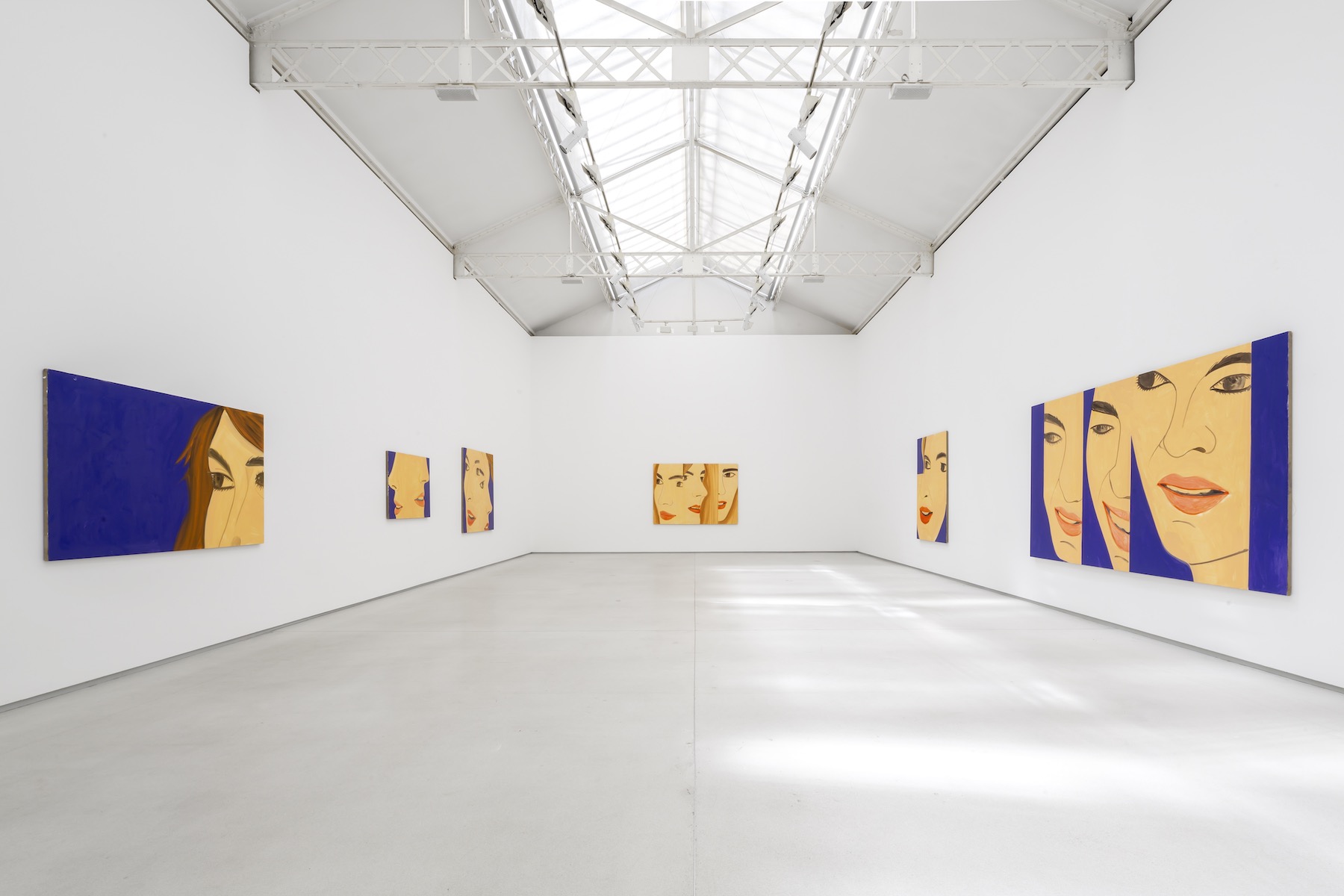 Installation view of Alex Katz’s “Purple Splits,” photo by Charles Duprat, courtesy of Thaddaeus Ropac gallery.
Installation view of Alex Katz’s “Purple Splits,” photo by Charles Duprat, courtesy of Thaddaeus Ropac gallery.
Every portrait conveys a compelling angle by way of a twinkling eye, a dimpled grin, or a wrinkled brow. In one painting alone, titled Purple Split 7 (2023), an expression of piqued interest evolves to one of sober understanding, and finally settles on a peaceful determination. Works of charcoal and red chalk on craft paper are juxtaposed with the rich purples, reds, and browns of oil on linen, forming an elusive, character-driven picture show of power, desire, and fragility in our contemporary ethos.
Whitewall had the opportunity to speak to Katz about our ever-changing cinematic world, painting by way of the subconscious, and being in the right place at the right time.
WHITEWALL: What was the starting point for the series and the style of the portraits?
ALEX KATZ: It’s a confluence of different things; the splits come from advertising and movies. The pretty girl is a bland image. That’s the second time I did a series on one woman and there is an idea of scale there, which is making a small picture with a big scale. These pictures are really quite small for me. That was the interesting thing. It’s the kind of painting where the sensation of scenes is very immediate. But then when you start to figure it out, it becomes slow. It’s not hard edges, it’s the painted edge. That’s the technical stuff.
Once that’s figured out, I rely on my subconscious to paint the painting—a good part of it. Then at the end, I try to pull it together. They go very fast because it’s not conscious. It’s sort of the surrealist idea of using your subconscious. It’s the way Soutine painted. It’s the way Jackson Pollock painted. It’s a way of getting into a painting that’s not contained, like the French painting of Picasso and Matisse. There is no perfect painting in a way. With Soutine, he had to figure it out while he was doing it. So all these things come together.
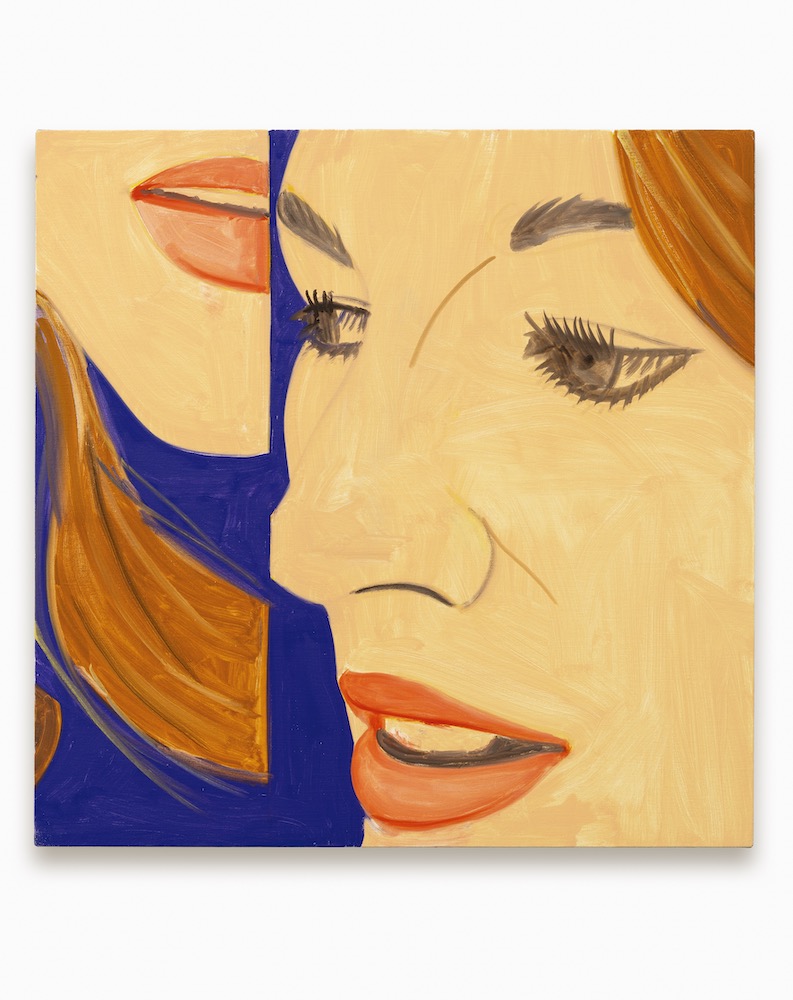 Alex Katz, “Purple Split 1,” 2022, 48 x 48 in., oil on linen; © Alex Katz / Adagp, Paris, 2023, photo by Charles Duprat, courtesy of Thaddaeus Ropac gallery.
Alex Katz, “Purple Split 1,” 2022, 48 x 48 in., oil on linen; © Alex Katz / Adagp, Paris, 2023, photo by Charles Duprat, courtesy of Thaddaeus Ropac gallery.
WW: In terms of lighting, was there a time of the day or place?
AK: No. Generally, my painting shouldn’t tell you the time. I paint in different lights. And the light is the thing that unifies the whole — all these ideas. The light is made by the selection of the colors. When the light shines right at something, it destroys the volume and you get a flat light. But the flat light is more immediate than the model light. That’s all part of the painting.
WW: What about the purple background?
AK: It is the color you haven’t seen. That’s one of the reasons it’s there. And it’s like figuring around. They go together and give you a light.
“They go very fast because it’s not conscious.” — Alex Katz
WW: They are cinematic by nature. Do you see them as inspired by cinema?
AK: Cinema. Advertising. It’s popular culture. We live in a cinematic world essentially. We perceive the outer world through cinema and photographs. They determine what things look like. What you saw twenty to thirty years ago, if you go to the same place, you don’t see it the same way anymore. If you see something and you believe it’s true, it’s absolutely nonsense. Nothing is true. It keeps changing. To paint something realistic, it’ll be realistic for a while but then it’ll become obsolete. It may become a great painting, but it will be obsolete as it’s not realistic anymore. So you’re trying to make something out of the contemporary world you live in that is plausible. A Rembrandt doesn’t look realistic.
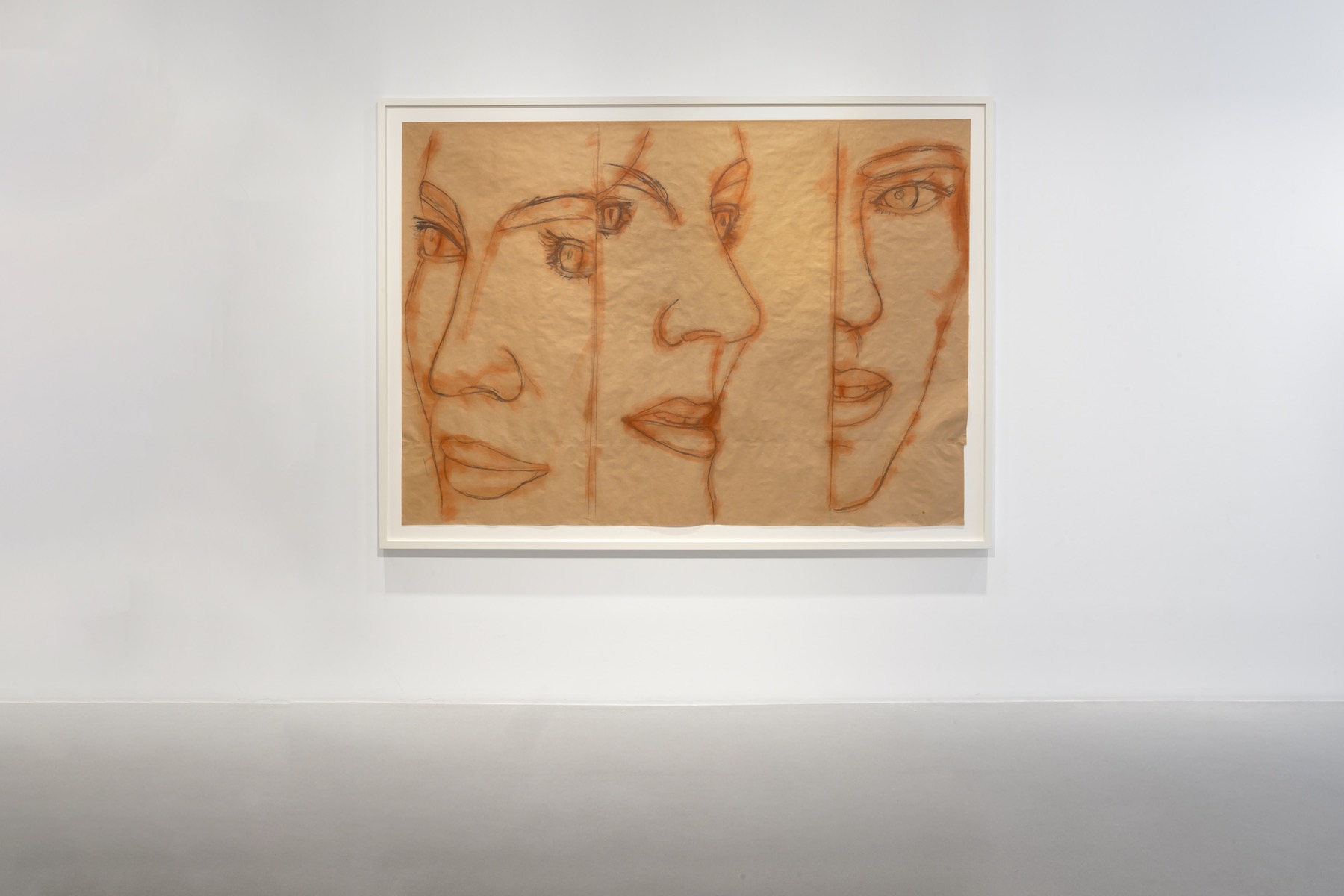 Installation view of Alex Katz’s “Purple Splits,” photo by Charles Duprat, courtesy of Thaddaeus Ropac gallery.
Installation view of Alex Katz’s “Purple Splits,” photo by Charles Duprat, courtesy of Thaddaeus Ropac gallery.
WW: What are you aiming to capture in their repetition?
AK: You retain a singular image out of the repetition. Representational painting is a victim of sentimentality, words, and stories. The double was an attempt to strip a painting of content completely. That was the idea. The first one I did was in 1959 and I said, well, that’s destroyed what I’ve been thinking a painting should be. It is like movies, and it keeps moving, but it has a contemporary look, which I like. I wanted to get away from psychological portraits.
WW: These paintings follow your career retrospective at the Guggenheim. Did your experience of putting together that show, seeing all your work together across time, impact this body of work?
AK: No. I think most retrospectives, from where I stand, are failures. And the failure is usually trying to fit the wrong amount of paintings in the wrong amount of space.
WW: Going back to something you said a bit earlier, which is that a painting changes in 20 years. People look at them differently. The same painting becomes a different painting, and for you too.
AK: I’ll give you an example I use. Washington Square when I grew up was a bad impressionist watercolor. Then it became a TV set. Now if you go to New York to Washington Square you see it through TV and movies. You don’t see it the way people saw it twenty years ago. They saw this impressionist painting. That’s a big change.
You get into an area that makes people want something more rigid in structure because it’s completely indeterminate. You can’t paint realistic forever. It becomes something else. It’s impetuous to paint—you can’t win. You can make a great painting but you can’t keep it realistic for twenty, thirty, forty years. As in fashion, it goes this way and that way. You can’t tell.
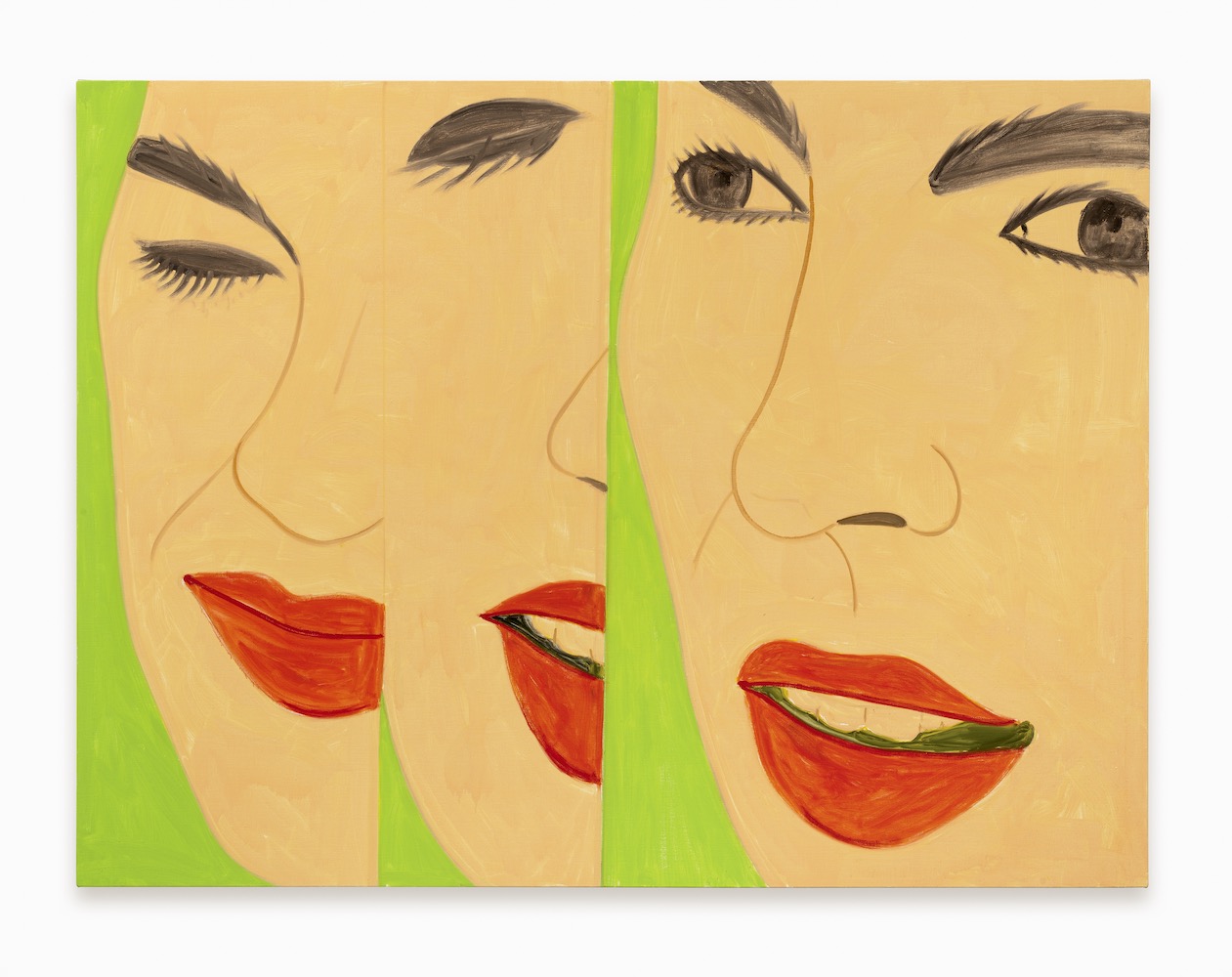 Alex Katz, “Purple Split 12,” 2023, 72 x 96 in., oil on linen; © Alex Katz / Adagp, Paris, 2023, photo by Charles Duprat, courtesy of Thaddaeus Ropac gallery.
Alex Katz, “Purple Split 12,” 2023, 72 x 96 in., oil on linen; © Alex Katz / Adagp, Paris, 2023, photo by Charles Duprat, courtesy of Thaddaeus Ropac gallery.
WW: And is this why you describe yourself as a painter of the “immediate moments”?
AK: Yes. I try to get the immediate moment.
WW: How do you like to stay in the present moment?
AK: The subject matter. The sensations. These paintings I’m doing now are supposed to look new. That’s the idea. The problem with my painting is it’s new and it’s old. New things don’t age sometimes, but you can relate them to old paintings and to different cultures. Basically, painting doesn’t get any better, it doesn’t get any worse, it just changes.
“Nothing is true. It keeps changing.” — Alex Katz
WW: Will you be spending some time in Maine painting this summer?
AK: Yes. In Maine you refresh yourself. I think New York is a terrible place all year round. Most painters only last in New York seven years and then they get a country place. Actually, most painters are alive for three years; they have three years where they connect, and then they repeat. The work gets better, or goes down. Even a great painter like De Kooning, the women were his connection with the time. After that, he painted better paintings but he didn’t have the connection with time.
The connection is short. It’s like when you’re connecting with the music of your teenage years. When you’re a teenager, you really connect to popular music of course. But then when you’re 25, you’re out of it. You never really connect the way you did when you were a teenager. The trouble in the world is instability against stability. There’s a big split of people wanting something stable from the people who want something that’s alive.
WW: When we last interviewed you, you said, ‘I want to give people something pleasant. I relate to the impressionists seeing the world with golden glasses.’ Do you still feel like you want to give people something pleasant?
AK: Pretty much so. I don’t want any conflict over the subject matter. I don’t know if this is entirely true with the new paintings, but basically. When I was growing up, reality in painting was social justice. That was a reality. They have the thing of minor chord music that’s in Russia; they play the balalaika, and they sing and they cry. In Mexico they have it. We have the cowboy songs in the United States, “I’m so sad that you’re gone,” etc. People paint pictures like that and I despise it. I want something pleasant. I don’t want to sell you the subject matter, so I use bland subject matter.
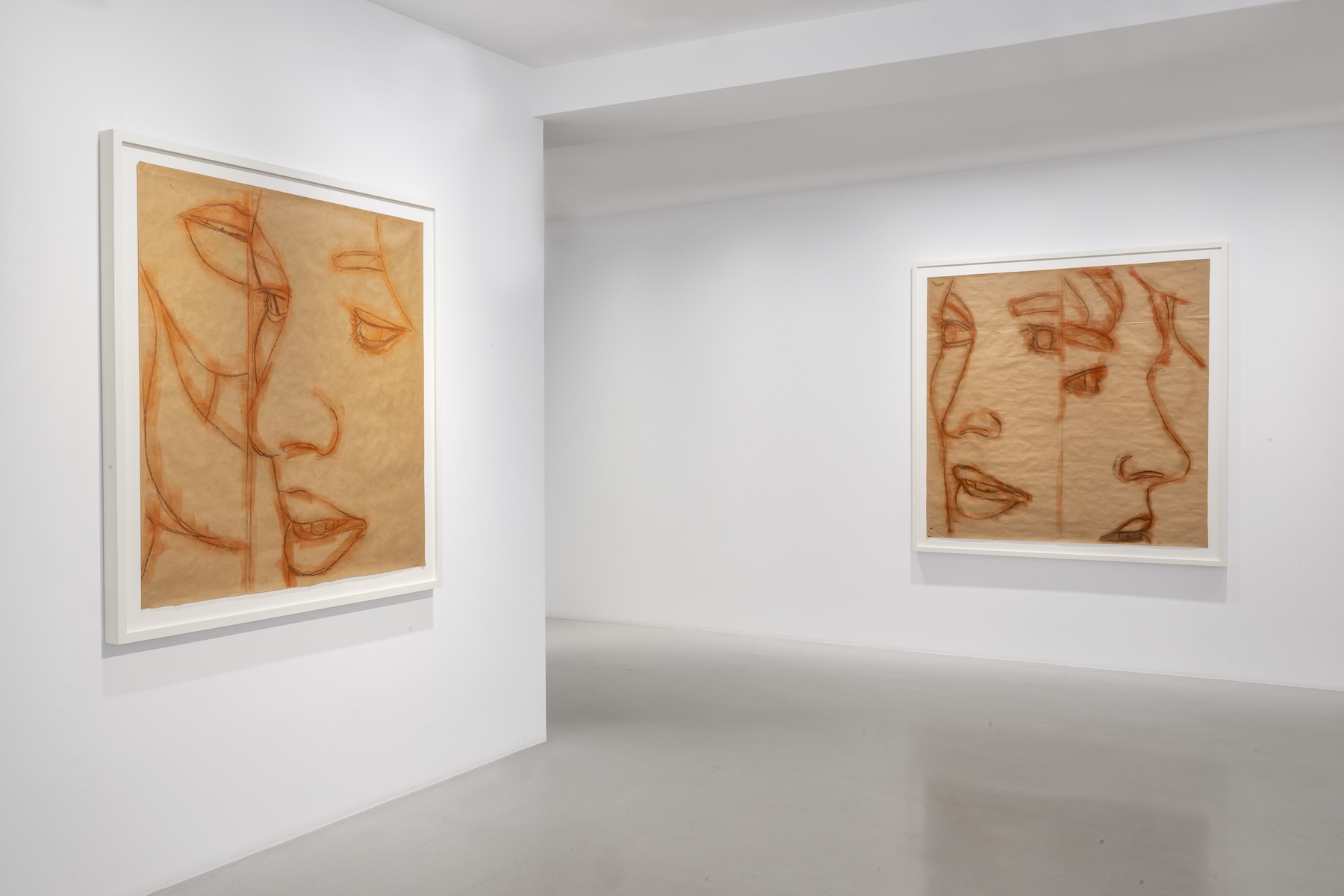 Installation view of Alex Katz’s “Purple Splits,” photo by Charles Duprat, courtesy of Thaddaeus Ropac gallery.
Installation view of Alex Katz’s “Purple Splits,” photo by Charles Duprat, courtesy of Thaddaeus Ropac gallery.
“The trouble in the world is instability against stability.” — Alex Katz
WW: Do you see yourself as an optimist?
AK: Well, I don’t want to bother people. I want the power of the paintings to be in the vision and the technique. I don’t want people to like my paintings because it’s a sad boy with big eyes. That’s it on an unsophisticated level. But it goes into a sophisticated painting too, where they have a story that you’re supposed to feel sympathy with. And then we feel it’s pretty much second class. And then you have a guy like Goya who can get away with it. I think American society is a lot more fluid. A poor man can become a rich man. You don’t have any restraints. But the rich men are not all the same because anyone can become rich. But all the rich people who are cultured won’t have him in the house.
WW: Do you think it’s still the case in the US?
AK: It’s still open but not socially—economically and financially, yes. You have a lot of people buying art that don’t know anything. You make a painting and the guy, he’s made his fortune with laundromats, or something like that, he wants a painting. So he goes into the most famous gallery that’s easy to find and says, ‘I want a painting.’ And the guy says, ‘Well, how about this?’ A lot of paintings are sold like that.
WW: You’ve said your life is like a miracle. That you happened to be in the right place at the right time and everything worked Does that still ring true for you?
AK: To paint a good painting is a miracle. Everything has to be in the right place.
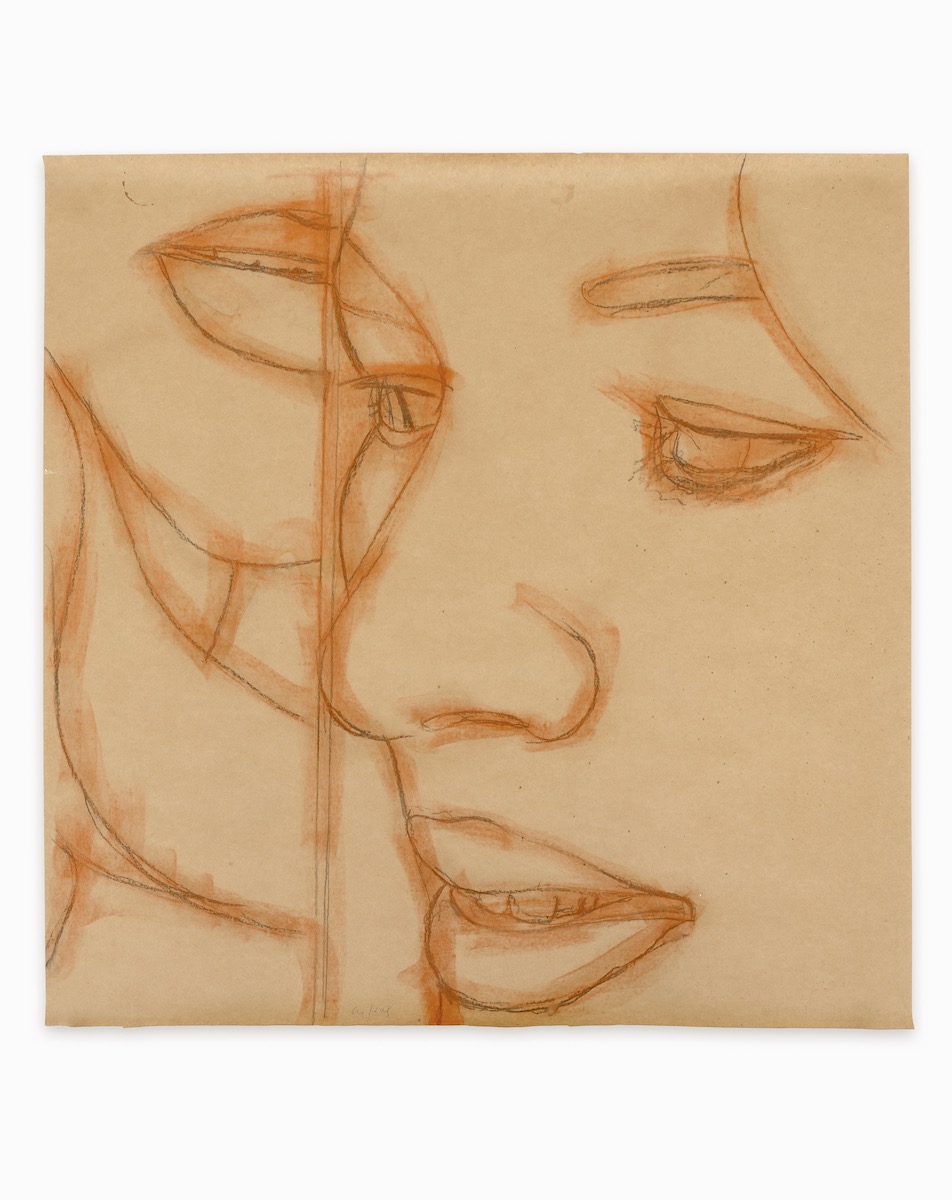 Alex Katz, “Purple Split 1,” 2022, 48 x 48 in., charcoal and red chalk on Kraft paper; © Alex Katz / Adagp, Paris, 2023, photo by Charles Duprat, courtesy of Thaddaeus Ropac gallery.
Alex Katz, “Purple Split 1,” 2022, 48 x 48 in., charcoal and red chalk on Kraft paper; © Alex Katz / Adagp, Paris, 2023, photo by Charles Duprat, courtesy of Thaddaeus Ropac gallery.






